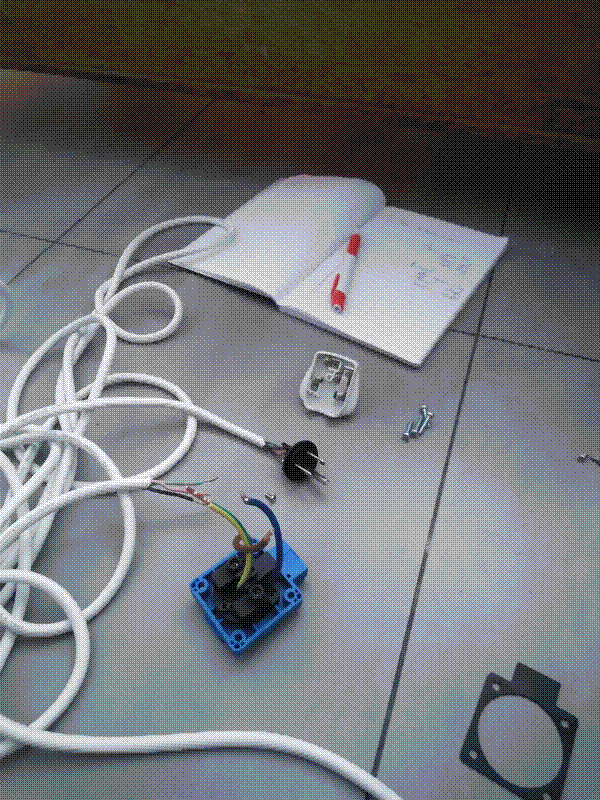In the past my fieldwork with the laser scanner has been in a place with a permanent large diesel generator, so I could just hook in the battery charger for the laser scanner as I would on a normal house circuit. For this fieldwork however, I will be moving around more and I will be based in small villages with no electricity supply. In order to power my equipment I have had to invest in a generator, which has demanded a lot of learning about generator maintenance and electrical circuits.
We used a portable generator for a single day during the last fieldwork and it blew up the battery charger, meaning I had to ship a new one from the UK. The generator was a little one which you would find more commonly on a building site, it wasn’t really designed for powering sensitive equipment like computers. When I got back the to UK and interrogated the GEF people, they said that normal generators like the one I had used often don’t provide a constant power output, that is, the sine wave of AC current isn’t that well modulated, it jumps around all over and can cause fuses to blow. In my case I was unfortunate because the spike had somehow jumped the plug fuse and blown up something internal to the machine which couldn’t be easily repaired. The answer was to buy an “inverter generator”, which uses a micro-computer to electronically modulate the sine wave of power output, making the output much more constant.
I couldn’t afford to bring a generator on the plane, though it would have been a lot simpler and saved me a lot of anxiety if I could have brought one on the plane, as I would have been able to test it before I arrived and be guaranteed of its compatibility with the scanning equipment. I opted instead to buy one in Dar es Salaam prior to my bus journey down to Kilwa Masoko.
A driver and I first stopped at a South African hardware store in a big mall called Mlimani City, but they only had conventional generators. Next we went into the centre of the city to India Street where there are a bunch of small hardware shops, many of which have loads of generators. Still, finding an inverter generator was pretty difficult. Of the 10 or so shops we went in which had normal generators, only 2 had an inverter generator. I opted in the end for a Honda eu20i because I had already seen them online when I was researching this back in the UK, the other option was a non-descript Chinese generator, which seemed suspect. None of the generators were the ideal 1.5 KW output, the eu20i is a 2 KW output, meaning its a bit more bulky than I would like, but at least I got one.
The next issue was hooking it up to my equipment. I got some cable and assorted sockets thrown into my purchase as a bargain, as the socket outlet on the generator was for a US/Japan 2 flat-pin plug. I had been hoping for a UK type plug because that’s what is used commonly in Tanzania. Maybe I should have pushed harder for a proper adaptor or looked for a different generator.
I took apart my 3 round-pin to UK socket adaptor, leaving only the UK female part, and wired it up via some spare flex to a US/Japan 2-flat pin plug which ift the adaptor. The issue was providing a fuse somewhere along the circuit, so I will always have to run the generator off my multi-socket, which has 4 thermal fuses inside it, one for each socket.

I tested out the hacked together setup and amazingly it worked. I also learned how to top up the oil and got some 4-stroke oil from a “Lubricants” store. I am still slightly worried about the cable’s performance in the rain. I will try to keep it under cover while using it.
